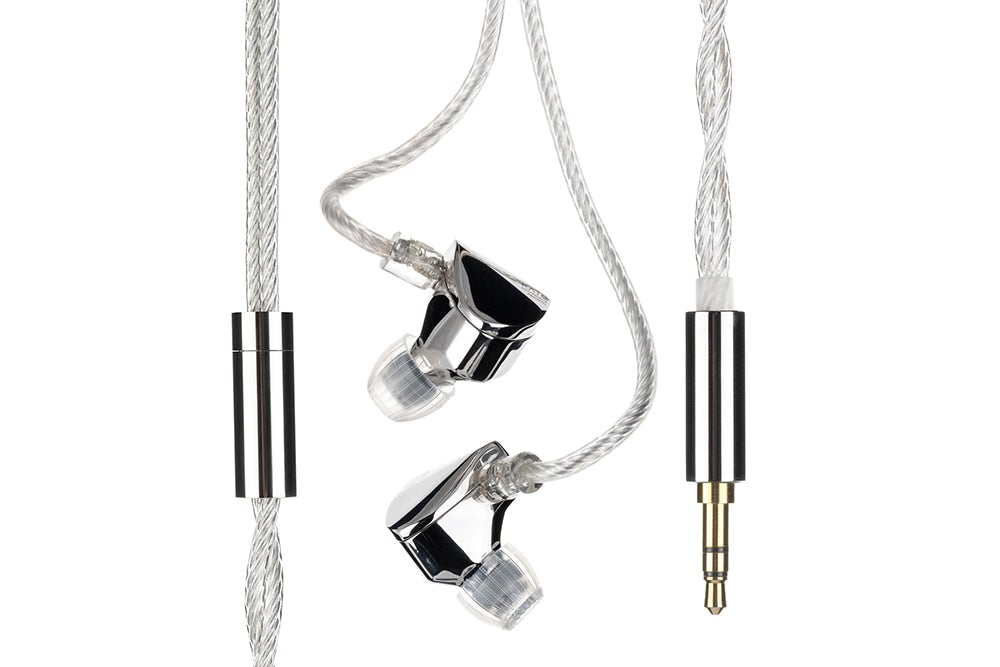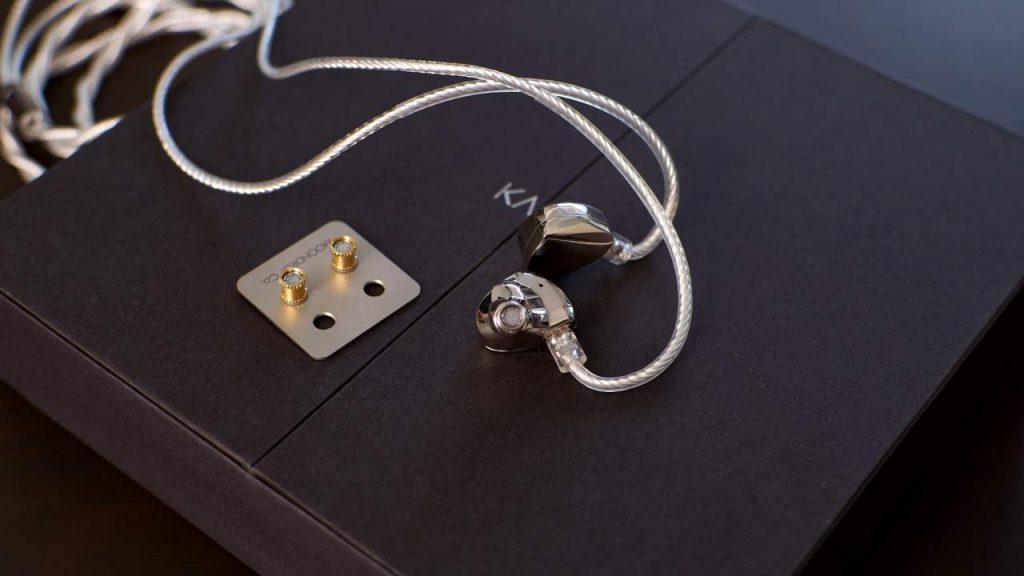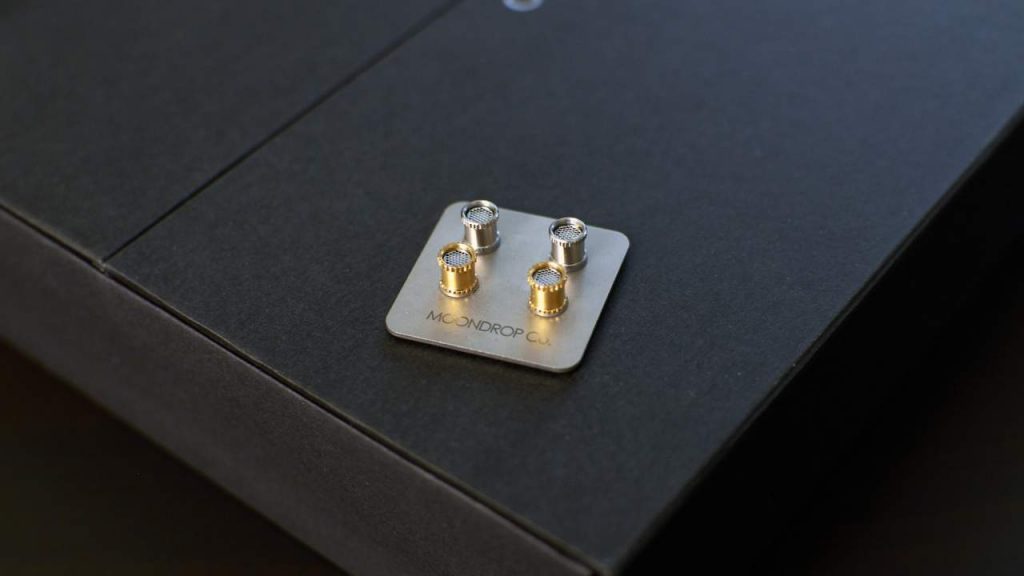Kato is not my first encounter with the Moondrop, but it is the one that will finally set my opinion about Moondrop as a really skillful brand with mature sound tuning. You know, once is a coincidence, twice might still be, but thrid earphones in line that sound truly good can’t be. And by good, I really mean the best out of those three, and given that neither of the previous ones was a slouch – that’s something to say about this pair.
Build and Features
Moondrop Kato is built like a boss – full metal construction is highly polished and feels as high quality and as sturdy as I’ve ever seen. The cable is positively thick and doesn’t tangle easily, while the microphone is kept at bay really well. So no matter which angle you choose to look at it, this is a superbly built set of in-ears. This next part is highly subjective but ear tips, made of very soft silicone, are superb. Those grip so well and feel so fluffy and unintrusive once put in place, that I can honestly say I’ve never in my life experienced a nicer set of ear tips, ever.
But wait, there’s more good news. Looking through the box, I found a small aluminium plate with an additional set of nozzles. Unlike the mounted silver ones that are made of stainless steel, this other pair is made of brass. Close examination proved them to be exactly the same in terms of dimensions, so it’s not one of those different bass tuning schemes. Supposedly, just using a different material should offer some sort of tonality change. Curious thing, and I’ll put it to the test later.
Technology
Moondrop Kato is based on a dynamic driver. That feels refreshing in day and age when a big number of balanced armature drivers is used for bragging rights, even though more often than not those models have poor driver integration. But back to the one on hands here, Kato is supposedly using some sort of fancy Diamond-Like Carbon composite driver. If that’s good, or great, or even maybe not so good… only the real-life listening test can tell. For now, I want to finish this section quickly by telling you that Kato is reasonably sensitive at 123 dB. However, I’m not sure how this was specified since I definitely encountered in-ears that had similar numbers but felt even more sensitive. That said, all is quite OK in this regard and you shouldn’t have any trouble driving them even with small portable devices, that offer 100 mW of power or more.
Testing and Sound
I started my testing with the Kato connected to the Hidizs S9 Pro and it was a very good combination with plenty of details and lively sound, but switching to an even more capable Hidizs DH80s, bass became deeper and the soundstage simply grew in all directions, so it was pretty clear that these IEMs fully deserve the best DAC you can feed them with.
When paired with a high-quality source, Moondrop Kato is capable of creating a truly impressive soundstage that floats around your head more so than with any other IEM I’ve tried near this price. All tones have plenty of room to breathe and are well separated from each other. Listening to a good acoustic recording, after that main note hits, tone decay that comes after it is easily observable. This only adds to that whole sensation of spaciousness, because small spatial cues and echoes of the space around the performers are contained mostly in tone decays. Without them, a presentation becomes dry and analytical but Kato isn’t troubled by such a thing at all.
Talking about tonality, you can expect a very beefy bassline. You need very deep rumbling notes for your electronic music, worry not cause this IEM can provide them. The lowest notes are somewhat elevated, heavy, and dense, giving true boldness to the sound of these. Luckily, the bass never feels dominant and all-enveloping to the point that it’s the main feature of the earphones. The moment we arrive at the midbass region, Kato tones it down and doesn’t let the midrange become overshadowed. True enough, the lower midrange is recessed as Kato belongs to a V-shaped group of headphones. That said, right there in the mids section, we have some beautifully clean tones. Even though the upper midrange part is slightly elevated, it never fails to sound perfectly smooth and natural, without any excessive edginess.
Tuning With Nozzles
By default, Moondrop Kato comes with steel nozzles preinstalled, and everything said so far was with these in place. Switching to the brass ones definitely changes tonality, and for the warmer one. The upper bass section becomes more emphasized, and that makes the whole sound seem fuller and warmer. At first, I was mesmerized by this and really enjoyed it. A few songs down the road, I actually realized that I’m starting to miss that tidiness and increased clarity of the default ones. Finally, I switched back and decided that the steel ones are the way to go for me. Nontheless, you might feel differently, and having choices is always a good thing I suppose.
This nozzle experiment is also a very interesting one, and sort of an eye-opener when it comes to fine-tuning a product. I would have never guessed that choosing a different material for this small part can have such a noticeable sonic impact. But I guess it’s true, we learn as long as we live.
Comparisons
Moondrop Starfield is smooth and detailed sounding in-ear, but Kato hear is simply better in almost every regard. It offers a deeper and punchier bassline, with a much-improved soundstage and overall clarity. None of this is done by sacrificing any of the qualities that Starfield already possessed. Bravo for Moondrop.
NF Audio NM2+ was my standing champion at around 150 USD so far. A quick comparison was enough for me to realize that Kato is going to dethrone it without much effort. Don’t get me wrong here, NM2+ is still a very good in-ear with plenty of details and punchy bassline. That said, Kato offers a darker background and a bigger soundstage, with a deeper bassline and tidier midbass.
7Hz Timeless came to the market a bit later than Kato but was available for comparison at the time of writing this review, so I took the chance. This is another set of hugely capable in-ears. They are even more revealing of details, airier, and with quicker and crisper transients. Texture in the vocals and all other tones is more easily noticeable. Timeless is more forward and in your face too, while Kato is on the laid-back side of things, with more empty space between you and the instruments.
So technically speaking, I feel Timeless is even more capable, but if that kind of sharper and brighter signature is not your thing, you might still prefer Kato.
Conclusion
Kato is my third encounter with the Moondrop, and so far I can say it is easily the best one. This is an example of a well-rounded product, with a high-quality build, looks, and of course sound to match it. Having all that in one package, Kato is an as easy recommendation as it gets.
| MOONDROP KATO – CHARACTERISTICS |
|
Driver: 10 mm ULT dynamic driver |









I’ve tried to reach you on Instagram but you never replied. Hope you read this message and get back to me. I need to buy one iem to listen using the apple lossless /hires music through the ipod touch 7th generation, chord mojo 2 dac. Please suggest me the best iems that you can recommend for around $300 /500.
Online reviews can be a little confusing because I simply can’t try out the various options available in the real world. I have to depend on an expert who has listened to most of them.
Thanks
Hemant shah